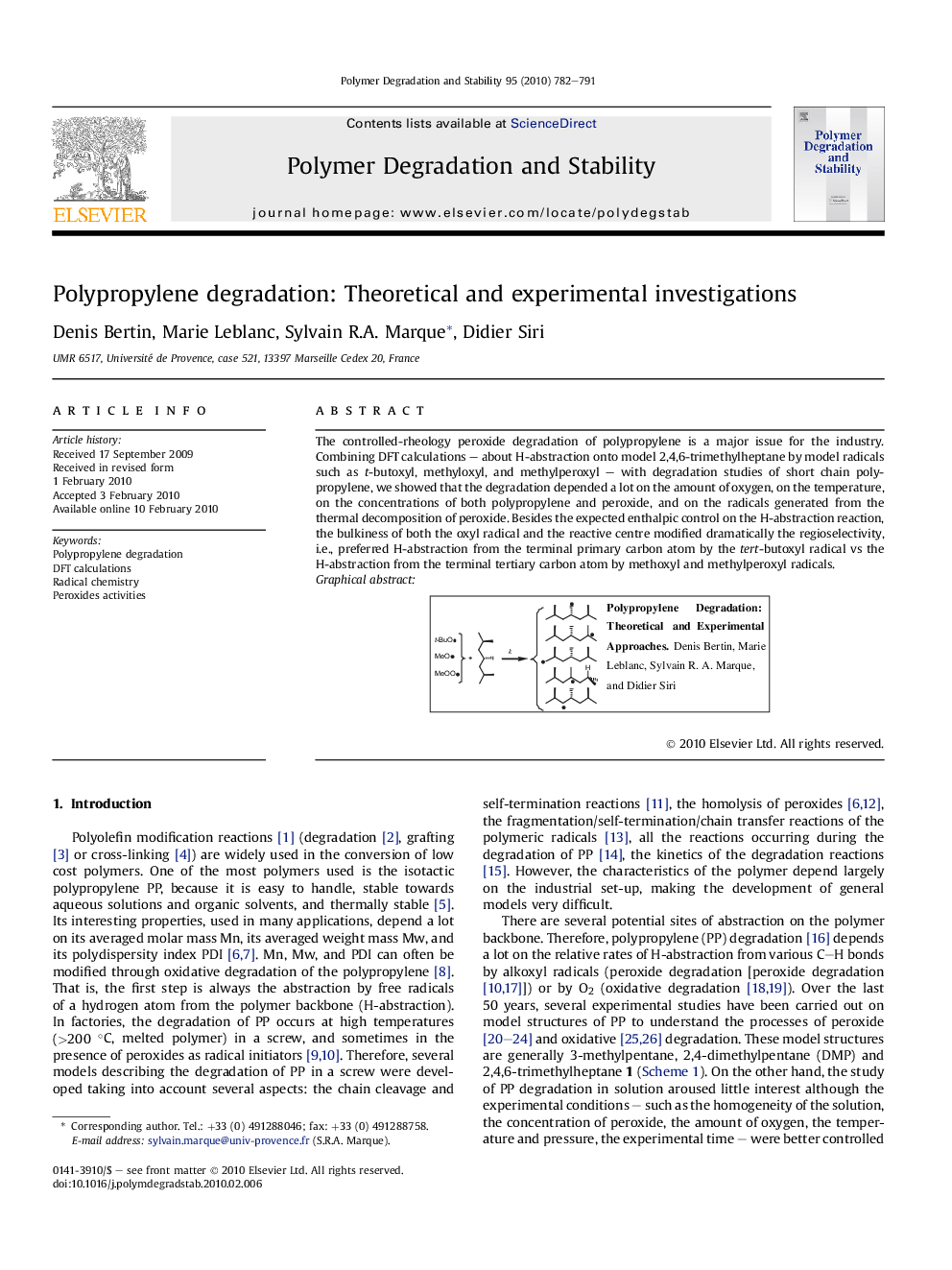| Article ID | Journal | Published Year | Pages | File Type |
|---|---|---|---|---|
| 5203551 | Polymer Degradation and Stability | 2010 | 10 Pages |
The controlled-rheology peroxide degradation of polypropylene is a major issue for the industry. Combining DFT calculations - about H-abstraction onto model 2,4,6-trimethylheptane by model radicals such as t-butoxyl, methyloxyl, and methylperoxyl - with degradation studies of short chain polypropylene, we showed that the degradation depended a lot on the amount of oxygen, on the temperature, on the concentrations of both polypropylene and peroxide, and on the radicals generated from the thermal decomposition of peroxide. Besides the expected enthalpic control on the H-abstraction reaction, the bulkiness of both the oxyl radical and the reactive centre modified dramatically the regioselectivity, i.e., preferred H-abstraction from the terminal primary carbon atom by the tert-butoxyl radical vs the H-abstraction from the terminal tertiary carbon atom by methoxyl and methylperoxyl radicals.Graphical abstractDownload full-size image
